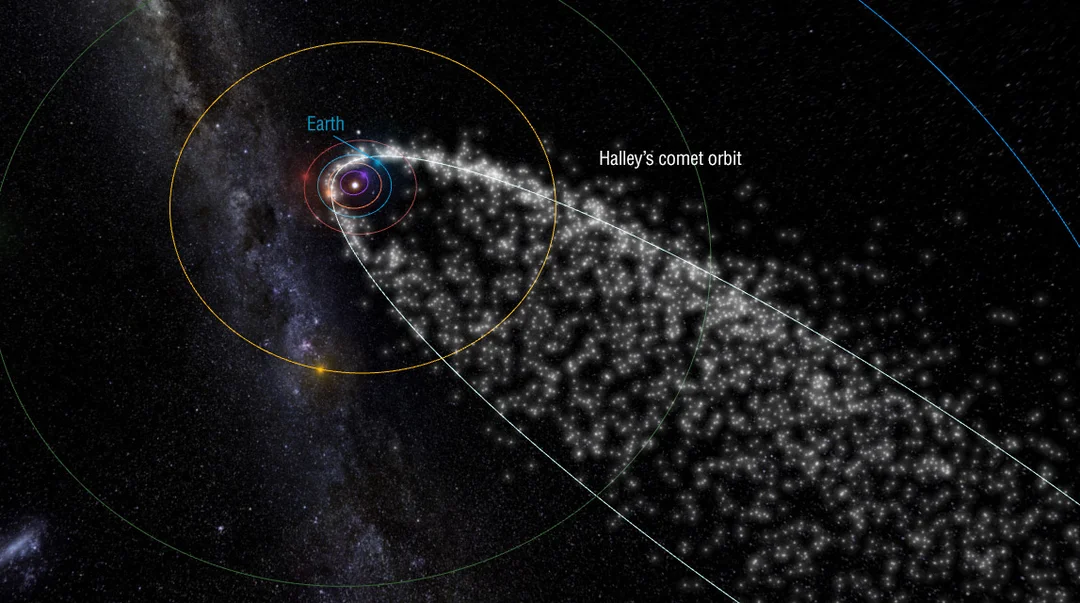
Eta Aquarid Meteor Shower Peaks: A Celestial Spectacle from Halley’s Comet Debris
Get ready for a dazzling display in the predawn sky! The annual Eta Aquarid meteor shower is peaking, offering a chance to witness the fiery remnants of the legendary Halley's Comet. This celestial event is a must-see for astronomy enthusiasts, promising a spectacle of shooting stars streaking across the darkness.
The Eta Aquarids are active from late April to late May, but reach their peak in early May. According to NASA, the shower is expected to peak early Tuesday morning, May 6th, with meteors entering Earth's atmosphere at a blistering 40.7 miles per second. These meteors originate from the debris field left behind by Halley's Comet, which famously orbits the sun every 76 years.

While viewing conditions vary by location, those in the Southern Hemisphere are in for a treat. The radiant, the point in the sky from which the meteors appear to originate, is the Aquarius constellation, which is higher in the sky in the Southern Hemisphere, allowing for a more impressive view. NASA estimates that viewers under optimal conditions can expect to see about 50 meteors per hour. However, given the influence of moonlight, expert Aliza Chasan from CBSNews.com suggests viewers can expect 10-15 meteors per hour just before dawn Tuesday morning.
Viewing Tips for the Best Experience:
To maximize your meteor-spotting success, follow these tips:
- Find a Dark Location: Escape city lights and street lamps for clearer skies.
- Get Comfortable: Bring a blanket, lawn chair, or sleeping bag.
- Look East: Position yourself with your feet facing east, looking up towards the sky.
- Be Patient: Allow your eyes at least 30 minutes to adjust to the darkness.
- Check the Weather: Clear skies are essential, so consult your local weather forecast.
Michelle Nichols, director of public observing at the Adler Planetarium in Chicago, recommends against using telescopes or binoculars which can limit your field of vision.
What Makes the Eta Aquarids Special?
The Eta Aquarids are known for their speed, zipping through the atmosphere at approximately 40 miles per second. In the Northern Hemisphere, these meteors often appear as earthgrazers – long, skimming meteors that create a dramatic spectacle along the horizon. These meteors are caused when Earth passes through the rubble trailing Halley’s comet as it swings around the sun.
While the peak viewing time is early May, keep an eye out for activity till May 21. According to Bill Cooke, who leads NASA's Meteoroid Environments Office, the waxing moon will wash out fainter meteors this year, so it is best to view the meteor shower far away from the moon's rays.
Will you be braving the early morning hours to catch this celestial show? Share your viewing plans and experiences in the comments below!
Related issues news
What time is the meteor shower on May 5th?
When and where to see the Eta Aquariids. While the shower will peak from May 5 to May 6, the shower will be active until May 21. To catch the meteors at their peak, NASA advises going outside around 2 a.m. local time on Tuesday. The moon will set by around 3 a.m., leaving skies dark until dawn.
How to watch a meteor shower?
Here are some tips to get the full experience, according to NASA: Find an area outside far from city or street lights. Get comfy with a blanket or lawn chair. Lie on your back, place your feet facing east and look up.
Where to look for Halley's comet?
To best view the Eta Aquarids, find an area well away from city lights or street lights. On a sleeping bag, blanket or lawn chair, lie flat on your back with your feet facing east and look up, taking in as much of the sky as possible, according to NASA.